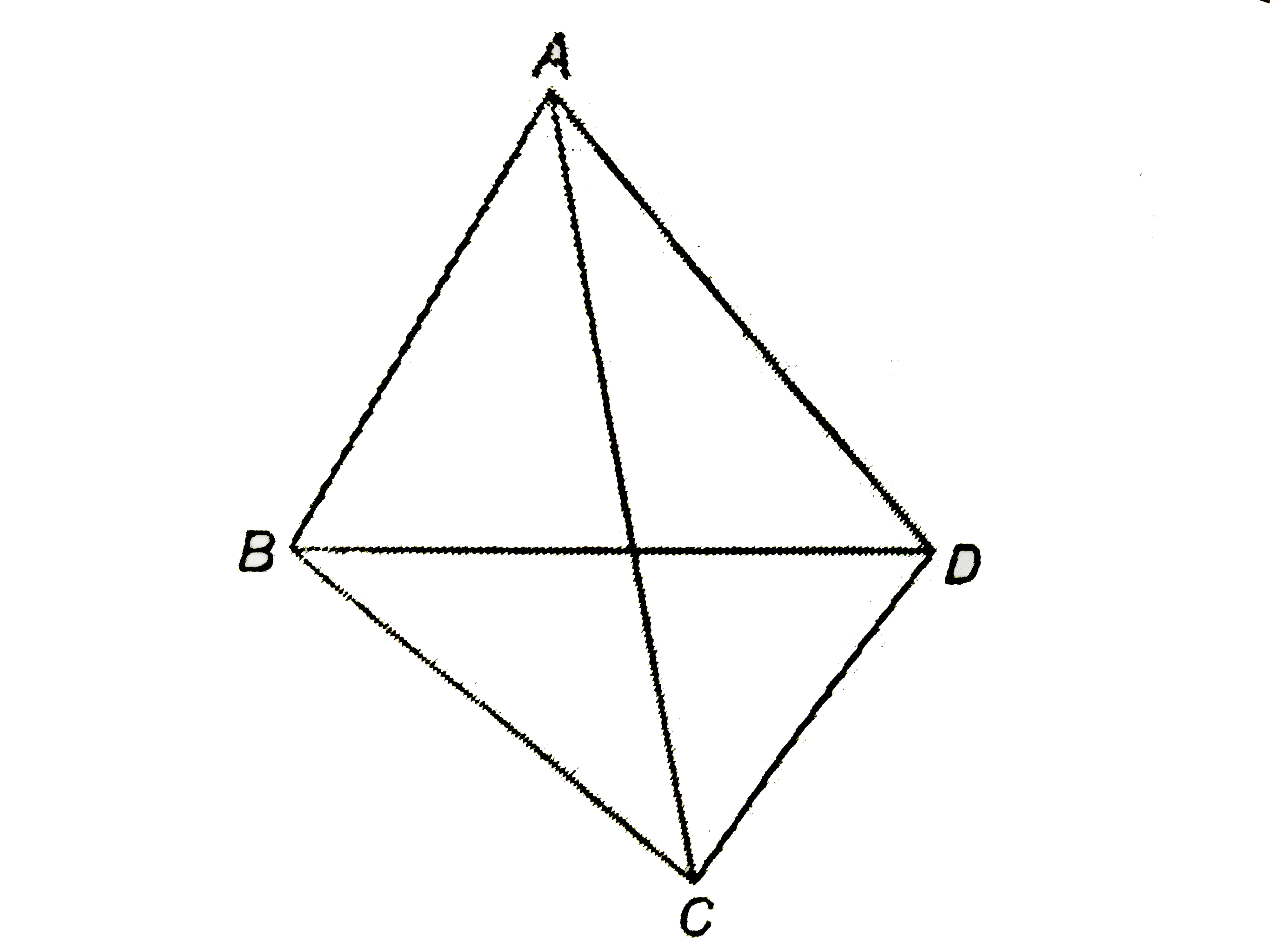Show that in a quadrilateral ABCD
To prove that in a quadrilateral ABCD, the sum of the lengths of the sides is greater than the sum of the lengths of the diagonals, we need to show that:
AB+BC+CD+DA>AC+BD
1. Consider Triangle ABC:
- In triangle ABC, by the triangle inequality, we have:
AB+BC>AC(Equation 1)
2. Consider Triangle BCD:
- In triangle BCD, again by the triangle inequality, we have:
BC+CD>BD(Equation 2)
3. Consider Triangle ACD:
- In triangle ACD, applying the triangle inequality gives us:
AD+CD>AC(Equation 3)
4. Consider Triangle ADB:
- In triangle ADB, we can state:
AD+AB>BD(Equation 4)
5. Add All Inequalities:
- Now, we will add all four inequalities (Equation 1, 2, 3, and 4):
(AB+BC>AC)+(BC+CD>BD)+(AD+CD>AC)+(AD+AB>BD)
- This gives us:
(AB+BC)+(BC+CD)+(AD+CD)+(AD+AB)>AC+BD+AC+BD
6. Combine Like Terms:
- On the left-hand side, we can combine like terms:
2AB+2BC+2CD+2AD>2AC+2BD
7. Simplify:
- Dividing the entire inequality by 2:
AB+BC+CD+DA>AC+BD
8. Conclusion:
- We have shown that:
AB+BC+CD+DA>AC+BD
- Thus, we have proved that the sum of the lengths of the sides of quadrilateral ABCD is greater than the sum of the lengths of its diagonals.
- In triangle ABC, by the triangle inequality, we have:
AB+BC>AC(Equation 1)
- In triangle BCD, again by the triangle inequality, we have:
BC+CD>BD(Equation 2)
- In triangle ACD, applying the triangle inequality gives us:
AD+CD>AC(Equation 3)
- In triangle ADB, we can state:
AD+AB>BD(Equation 4)
- Now, we will add all four inequalities (Equation 1, 2, 3, and 4):
(AB+BC>AC)+(BC+CD>BD)+(AD+CD>AC)+(AD+AB>BD)
(AB+BC)+(BC+CD)+(AD+CD)+(AD+AB)>AC+BD+AC+BD
- On the left-hand side, we can combine like terms:
2AB+2BC+2CD+2AD>2AC+2BD
- Dividing the entire inequality by 2:
AB+BC+CD+DA>AC+BD
- We have shown that:
AB+BC+CD+DA>AC+BD
- Thus, we have proved that the sum of the lengths of the sides of quadrilateral ABCD is greater than the sum of the lengths of its diagonals.
Topper's Solved these Questions
- BOOK - NCERT EXEMPLAR ENGLISHCHAPTER - TRIANGLESEXERCISE - SHORT ANSWER TYPE QUESTIONS11videos
TRIANGLES
- BOOK - NCERT EXEMPLAR ENGLISHCHAPTER - STATISTICS AND PROBABILITYEXERCISE - LONG ANSWER TYPE QUESTIONS12videos
STATISTICS AND PROBABILITY
- BOOK - NCERT EXEMPLAR ENGLISHCHAPTER - VOLUME AND SURFACE AREAEXERCISE - LONG ANSWER TYPE QUESTIONS8videos
VOLUME AND SURFACE AREA
Similar Questions
Show that in a quadrilateral ABCD AB+BC+CD+DA<2(BD+AC)
View SolutionABCD is a quadrilateral. Is AB+BC+CD+DA>AC+BD?
View SolutionThe given figure shows a quadrilateral ABCD. Prove that :
AB+BC+CD+DA>AC+BD
 View Solution
View SolutionABCD is quadrilateral. Is AB+BC+CD+DA<2(AC+BD)?
View SolutionIn a quadrilateral ABCD, AB= AD and CB= CD. Prove that:
AC is perpendicular bisector of BDView SolutionIn a quadrilateral ABCD, AB = CD and ∠B=∠C. Prove that
AC=ABView SolutionIn a quadrilateral ABCD, AB = CD and ∠B=∠C. Prove that
AD is parallel to BC.View SolutionIn a quadrilateral ABCD, AB= AD and CB= CD. Prove that:
AC bisects angle BADView SolutionIn a quadrilateral ABCD, prove that :
(i) AB+BC+CD>DA
(ii) AB+BC+CD+DA>2AC
(iii) AB+BC+CD+DA>2BDView SolutionIn a quadrilateral ABCD, AB = AD and CB = CD. Prove that :
(i) AC bisects angle BAD
(ii) AC is perpendicular bisector of BD.View Solution

